Key takeaways:
- Authenticity in campaigns builds trust and loyalty; transparency resonates more than perfection.
- Identifying core values is crucial for sincere messaging, involving self-reflection and feedback from others.
- Engaging authentically with the audience through vulnerability fosters community and genuine connections.
- Measuring authenticity impact requires both quantitative metrics and qualitative feedback to understand emotional resonance.
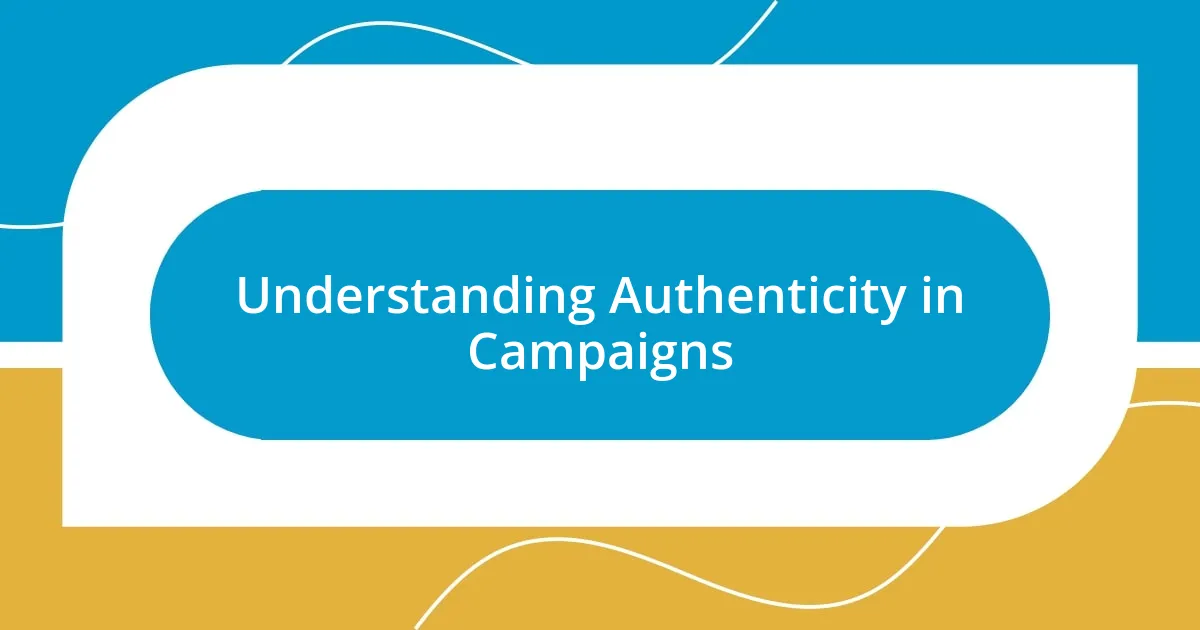
Understanding Authenticity in Campaigns
Authenticity in campaigns isn’t just a buzzword; it’s a core principle that can make or break a brand’s reputation. I recall a time when I worked on a campaign that felt insincere to everyone involved. We were pushing an idea that didn’t match our brand values, and the fallout was immediate. Have you ever felt that disconnect between what you’re promoting and what you truly stand for? It’s jarring, isn’t it?
When I think of authenticity, I picture vulnerability. I once shared a behind-the-scenes look at a project that didn’t go as planned, and the response was overwhelmingly positive. People appreciate transparency. It creates a connection that feels genuine. Isn’t it fascinating how revealing our imperfections often resonates more than showcasing only our triumphs?
Understanding authenticity means recognizing that honesty builds trust. For instance, in a recent initiative, we openly discussed our challenges and the steps we were taking to learn from them. The engagement skyrocketed. This experience reinforced my belief that being real invites loyalty. How do you feel when a brand openly shares its journey with you? I believe it makes the relationship personal and relatable.
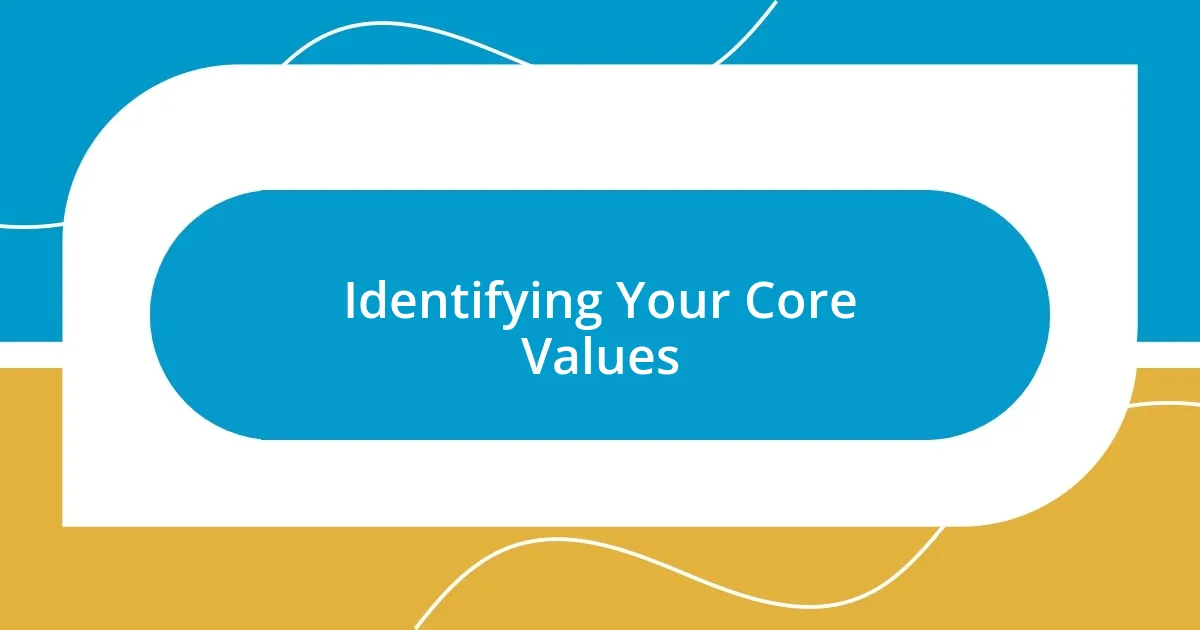
Identifying Your Core Values
Identifying your core values is essential for maintaining authenticity in your campaigns. I remember a time in my early career when I struggled with this. Tasked with designing a marketing strategy for a product I didn’t believe in, I found myself pushing messages that felt hollow. It taught me that when your values don’t align with your work, it’s challenging to convey sincerity to your audience. Reflecting on my own principles not only clarified my direction but also sparked creative ideas that felt true to me.
Here are some key aspects I consider when identifying core values:
- Self-reflection: Take a moment to think about what truly matters to you and your brand.
- List your values: Make a list of values that resonate with you. These could be honesty, innovation, or community.
- Assess past experiences: Reflect on moments when you felt aligned and authentic in your work; those moments often reveal your core values.
- Seek feedback: Sometimes, asking trusted colleagues or friends about your strengths can provide insight into what you stand for.
- Stay adaptable: Core values might evolve over time. Regularly reassess them to ensure they remain aligned with your current path and beliefs.
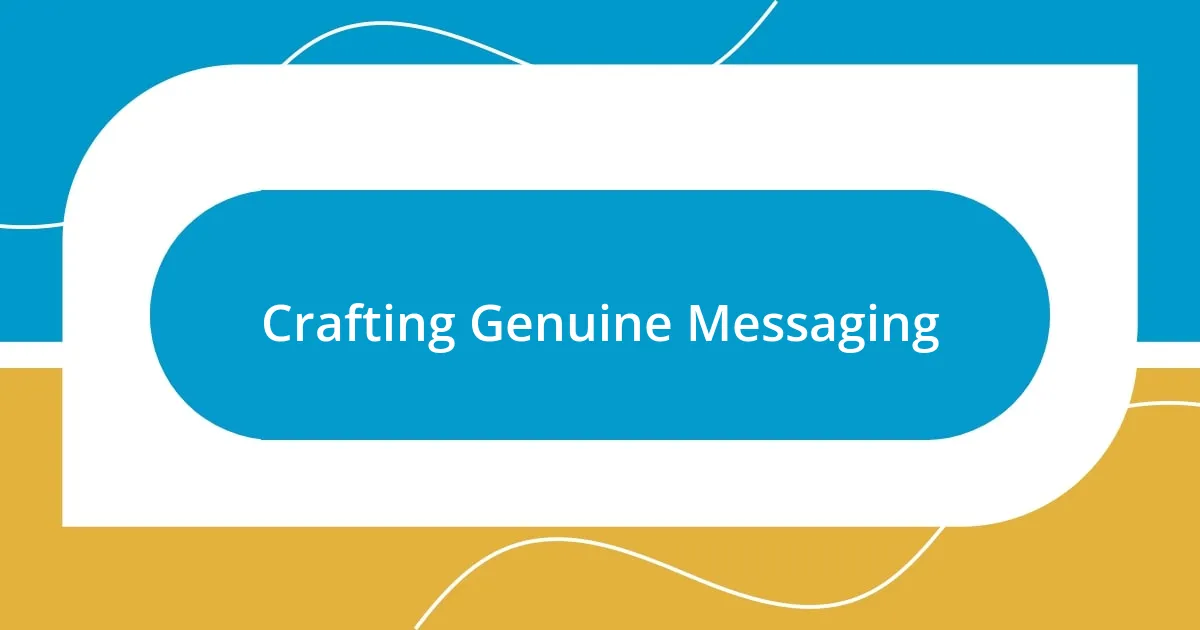
Crafting Genuine Messaging
Crafting messaging that feels genuine is an art form. I believe that the language we use should reflect our true selves. For instance, during a recent campaign, I decided to share my personal story related to the product. Instead of focusing solely on sales figures, I opened up about my struggles and how the product genuinely helped me. It was surprising to see how people connected with that narrative. Have you ever thought about how storytelling can enhance your messaging?
When it comes to creating compelling messages, it’s essential to speak the language of your audience. I remember when I switched up my tone for various social media posts to resonate more with our followers. Instead of being overly formal, I engaged them with light-hearted, relatable content. This shift not only boosted engagement but allowed us to build a community around shared experiences. It made me realize how adjusting our messaging can mean the difference between connection and indifference.
Authenticity shines brightest when we focus on real experiences. I once ran a campaign about a local charity that I deeply believed in. Sharing firsthand accounts from volunteers and beneficiaries transformed our messaging from promotional fluff to heartfelt stories. People responded with compassion and involvement, which illustrated that genuine messaging can evoke powerful emotions. Isn’t that the ultimate goal—creating connections that matter?
| Aspect | Traditional Messaging | Genuine Messaging |
|---|---|---|
| Focus | Sales and promotions | Emotional connection and stories |
| Language | Formal and corporate | Conversational and relatable |
| Engagement | One-way communication | Two-way interaction and feedback |
| Content | Generic appeal | Tailored to audience experiences |
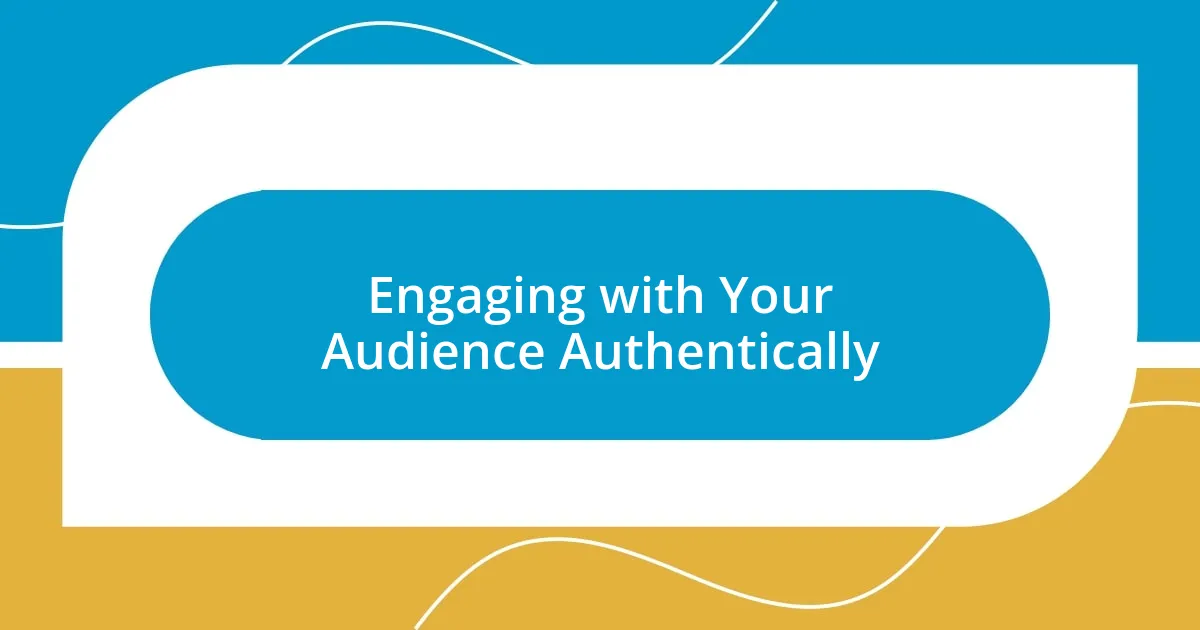
Engaging with Your Audience Authentically
Engaging with your audience authentically begins with genuine interaction. I’ll never forget the time I held an online Q&A session. At first, I worried about potential criticism or tough questions, but it turned out to be one of the most rewarding experiences. Answering questions in real-time and directly addressing concerns made my followers feel seen and valued. Have you ever tried connecting with your audience in a way that allows them to share their thoughts openly?
Listening plays a vital role in authentic engagement. Recently, I received feedback from a campaign that didn’t resonate as I’d hoped. Instead of brushing it off, I invited my audience to elaborate. Their insights not only informed my future strategies but also fostered a sense of community. It was enlightening to realize that encouraging feedback transforms the dynamic from being a one-way street to a thriving dialogue. Isn’t it amazing how a little vulnerability can strengthen connections?
Lastly, vulnerability is key. Sharing my own uncertainties or setbacks during a campaign humanized my brand. I recall posting about a failed initiative and how I learned from it. The response was overwhelming—people opened up about their own experiences, creating a close-knit community. This moment reaffirmed my belief that showing your true self, flaws and all, resonates deeply. How often do we shy away from revealing our not-so-perfect moments in favor of a polished image? Authenticity breeds connection, and embracing our authentic selves invites others to do the same.
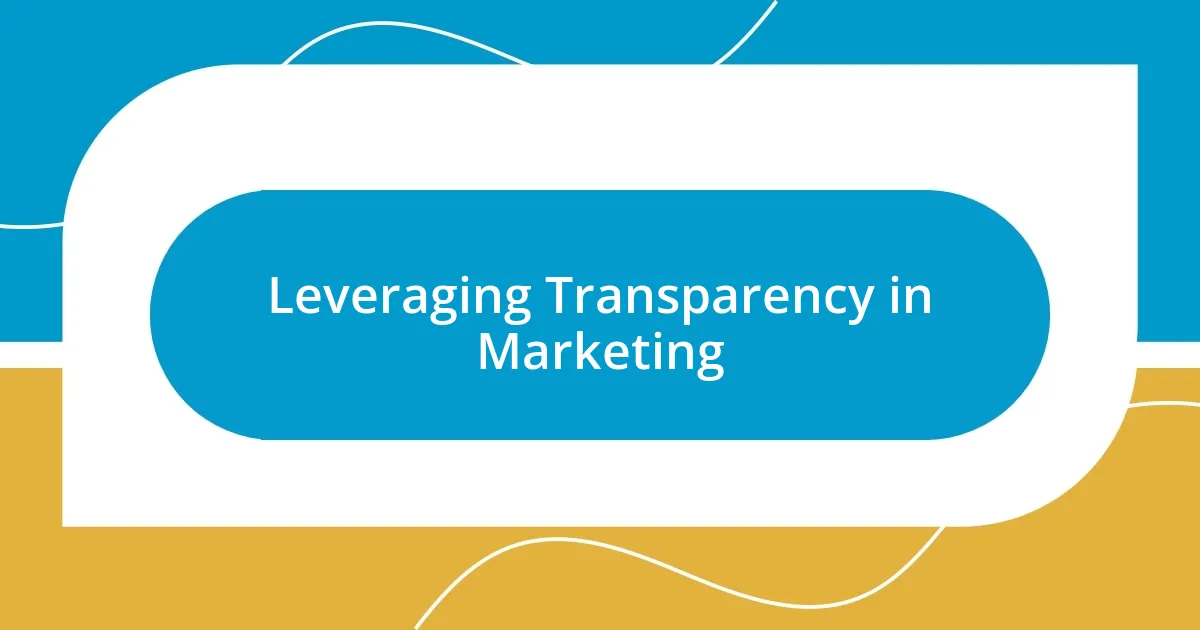
Leveraging Transparency in Marketing
Leveraging transparency in marketing is about opening the door to honest conversations. I remember a campaign where I shared behind-the-scenes footage of our production process. It wasn’t just about the end product; it was about our values and commitment to quality. By showing the hard work and thought that goes into each item, my audience felt more connected to our mission. Isn’t it fascinating how vulnerability can transform customer perceptions?
One time, I faced backlash on a campaign where we miscommunicated certain features. Instead of hiding, I chose to address it publicly. I shared a video acknowledging our mistake and explaining how we planned to improve. This simple act of transparency not only regained our audience’s trust but also sparked a dialogue about their expectations. How often do we underestimate the power of admitting our faults?
Moreover, being transparent fosters a sense of community. I initiated a monthly feedback loop, inviting customers to share their thoughts on new ideas directly. The insights I gathered were invaluable, and there’s something incredibly empowering about involving your audience in decision-making. It made me realize that people want to be heard, and their contributions enrich the brand experience. Have you considered how integrating customer feedback can propel your marketing efforts?
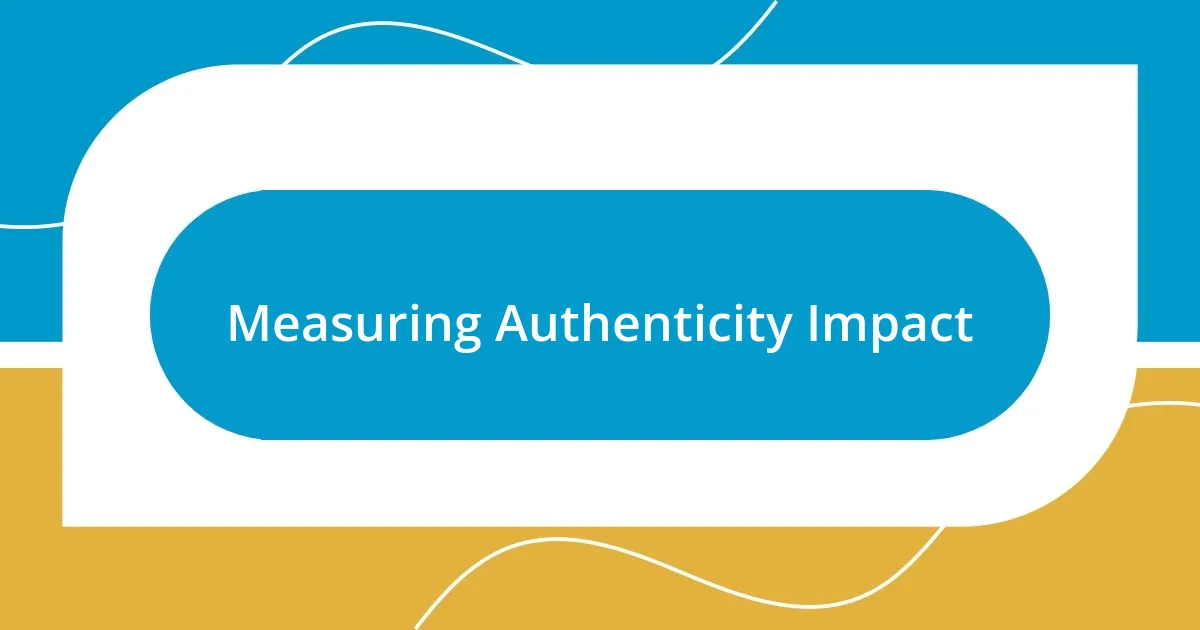
Measuring Authenticity Impact
Measuring authenticity impact can be tricky, but I believe in using both quantitative and qualitative metrics. For instance, after launching a campaign focused on sharing real customer stories, I noticed not just an uplift in engagement rates but a spike in positive sentiment analysis on social media. Have you ever looked closely at how your audience feels about your brand beyond just the numbers?
I learned that collecting feedback through surveys and direct interactions unveils deeper insights into authenticity. After implementing a sentiment tracker following a transparent campaign, I was surprised by the emotional resonance it created. The heartfelt messages from customers expressing gratitude for our honesty revealed a profound connection. Isn’t it striking how emotions can shape perceptions of authenticity?
Additionally, I often experiment with A/B testing to see which authentic messaging resonates most. For a recent initiative, I compared the performance of a polished ad versus a more candid, behind-the-scenes approach. The results were compelling; the candid content not only had higher engagement but also fostered genuine discussions among viewers. It’s a reminder that at the core of authenticity assessment lies understanding how our audience truly connects with our message—what resonates with their hearts.
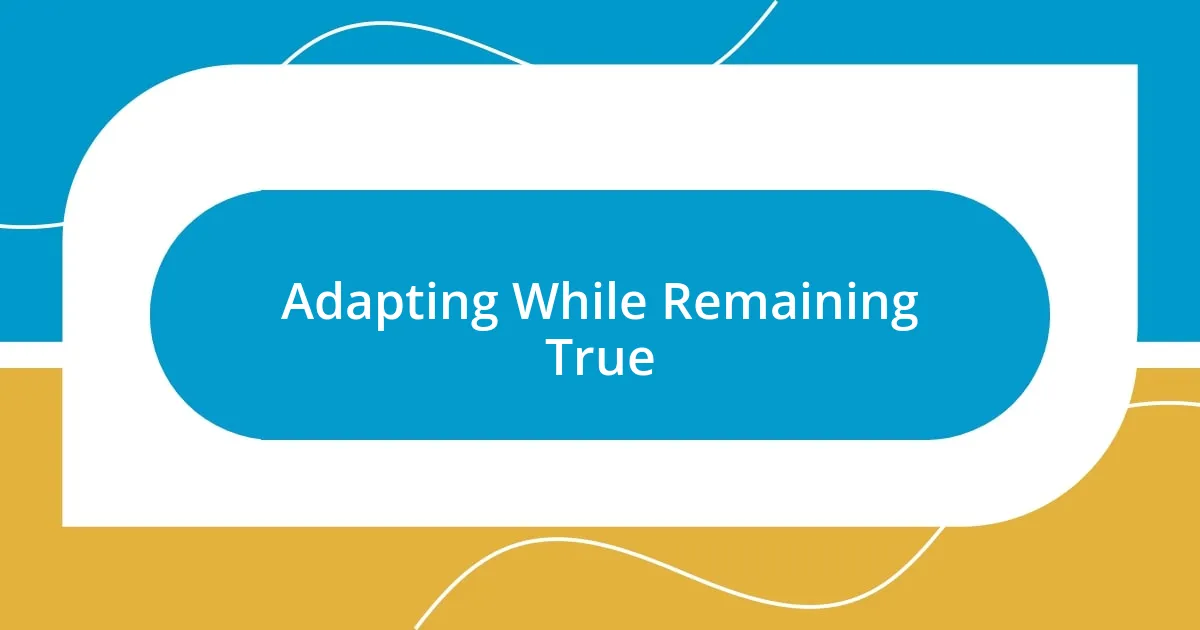
Adapting While Remaining True
When I think about adapting in campaigns while staying true to myself, I remember a project that went through some unexpected changes. We initially aimed for a serious tone, but as we engaged with feedback, I realized our audience responded better to a lighter, more humorous approach. This shift didn’t detract from our mission; rather, it enhanced our authenticity. Isn’t it remarkable how flexibility can help you connect more deeply with your audience?
I’ve also learned that maintaining authenticity doesn’t mean sticking rigidly to one message or style. For instance, during a recent campaign, we pivoted mid-way to address a trending topic that resonated with our brand and values. While some might see this as inconsistency, I viewed it as an opportunity to showcase our brand’s adaptive nature while staying aligned with our core principles. Have you ever felt the tension between staying on course and being responsive to your audience’s needs?
Moreover, one of my favorite techniques is to weave personal stories into my campaigns. When I shared my journey of overcoming a challenge related to our product, it was a game-changer. Many in my audience related to my experience, reinforcing the idea that vulnerability and truth can lead to wonderful connections. This taught me that being true to oneself might sometimes require uncomfortable adjustments, but the impact on authenticity can be profound. Isn’t that what we aim for—authenticity that resonates?












